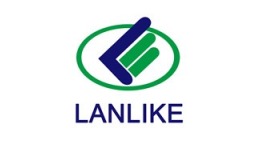方案详情文
智能文字提取功能测试中
铝吕酸盐及添加剂对铝阳极电化学性能的影响 铝酸盐及添加剂对铝阳极电化学性能的影响 余祖孝,龚 敏,陈 建,郝世雄,林修洲 (四川理工学院材料与化学工程系,四川自贡 643033) [摘 要] 为了扩大铝阳极的应用范围,采用添加剂来降低其腐蚀速度,同时活化铝阳极。用塔菲尔曲线、线性扫描伏安法、恒电流放电等方法,研究了在4 mol/L KOH溶液中,NaAD,及添加剂NaF对铝(99.999%)阳极电化学性能的影响。结果表明:NaAD,对铝阳极有害,NaAD,的浓度不要超过3mol/L;但添加 50 mmol/L NaF在 3. 5 mol/LNaAD,+4 mol/L KOH中,则铝的腐蚀电流密度由 23. 7mA/cm降低到20.8mA/cm,电极电位由-0.75V负移到-1.50Ⅴ,开路电位由-1.64V负移到-1.68V,电位滞后时间缩短,基本上恢复到铝在 4 mol/L KOH溶液中的电化学性能。 [关键词]电化学性能;铝阳极;添加剂 [中图分类号] TB971 [文献标识码1 A [文章编号1 1001-1560(2005)09-0015-03 0 前 言 铝阳极是一种高强度能量载体,电化学当量高(2.98A·h/g),电位负(-235V),能提供大的功率。近年来对其研究十分活跃铝空气电池理论能量密度可达8100W·h/kg,且铝对环境非常友好,是开发电池的理想电极材料21,同时也作为牺牲阳极。但是胶状产物 A1(OH)的阻塞,铝的极化和腐蚀相当严重,影响了其大规模的应用,目前大部分工作是在发展合金燃料,但是合金的制造以及取得最佳性能需要进行热机械加工,需要特殊的生产设备,所以对合金燃料有吸引力的替代物是溶液添加剂,它可使铝阳极的腐蚀速度降低到可接受的程度,从另一方面来活化铝阳极,就避免了合金化、热处理等过程。因此,铝阳极及电解液具有非常重要的地位和作用,作者研究了纯铝在 4mol/L KOH溶液中,铝酸盐及添加剂 NaF对铝阳极电化学性能的影响。 试 验 研究电极为高纯铝(99.999%,中=1mm)。将铝的一端表面裸露,其余用环氧树脂密封,用1200,2000,3000号金相砂纸打磨,然后用蒸馏水洗、乙醇除油;辅助电极为石墨;参比电极为HgO/Hg,OH(4mol/L)。 试剂为 KOH(分析纯),NaADz(化学纯),NaF(分析纯)。 ( [收稿日期] 2005-06- 1 5 ) 用LK98BⅡ量量铝阳极的线性扫描伏安曲线(1mV/s)、塔菲尔曲线(1mV/s)求铝的腐蚀速度J.以及开路电位随时间变化曲线。用 CHI660a(美国)测量铝阳极的放电曲线。此外,搅拌(60r/m in) ,温度为室温,规定氧化电流密度为负值。 2 结果与讨论 2.1 铝酸盐的影响 21.1腐蚀电流密度 铝腐蚀电流密度(Jco) NaAD,浓度(4mol/L KOH)的变化曲线(见图1)表明,添加NaA-D,会使铝的J增大。但是旦 NaAD,浓度增加,铝的J也有降低,这可能与 NaAD,的粘稠性有关。 图1 NaAD,对铝腐蚀电流密度的景响 21.2极化程度 铝酸盐对铝阳极极化程度的影响见图2。当Cap≤3mol/L时,虽然其浓度对铝阳极极化程度有一定影响,但影响不大;当 CaAlD,≥3. 5 mol/L时,产生一个突跃,极化程度急剧增大。为了更清 楚地表达极化程度,取极化曲线上的两个电电点:E=-1.25V和 E= -1.05V及对应的电流密度J和J,求得斜率AJ/AE(见表1), Cyaap,由3.0mol/L增加到3.5 mol/L时,AJ/AE值由153.6mA/(cm²·mV)突然降到97.3 mA/(cm’·mV),极化急剧增大。 图2 NaAD,对铝极化的影响(4 mol/L KOH) 表1 NaAIO,浓度对铝极化曲线的AJ/AE影响 CNaAD2 J/ J2/ AJ/AE/ (mol·L) (mA·cm2) (mA·cm²) (mA·cm·mV-) 74.5 112.5 189.7 72.8 104.9 166.7 72.3 103.8 157.6 72.3 103.0 153.6 57.1 76.5 97.3 4.0 51. 4 69.5 90.7 2 1.3开路电位及放电性能 随铝酸盐浓度的增加,铝阳极的开路电位都正移,但是变化不大(见图33)。图4是在J=70mA/cm下,NaAD对铝放电性能的影响,随铝酸盐浓度的增加,铝放电性能越差,当 Cap≤3mol/L时,浓度对铝电极电位的影响不大(即铝的电位正移大约200mV);但是当 CaAp,≥3. 5 mol/L时,产生一个突跃,铝的电极电位迅速正移(正移大约700mV)。其原因是:铝酸盐的存在影响了铝阳极溶解速度,铝酸盐含量越大,铝溶解速度越慢,直至完全不能反应;其次电解液变得粘稠,电导率降低。因此,为了保持铝阳极的正常性能,其浓度不要超过3mol/L。 图3 NaAD,对铝开路电位的影响(4mol/L KOH) 图4 NaAD,浓度对铝放电性能的影响(70mA/cm,4 mol/L KOH) 22 NaF的影响 2.2.11/腐蚀电流密度 NaF对铝的 Jcon影响见图5.图5表明,只要添加NaF,J.都会降低(与图1比较),当 Caf =50 mmol/L时,Jcorr最小(但没有完全抵消NaAD带来的不利影响)。 图5 NaF对铝腐蚀电流密度的影响 (4 mol/L KOH +3. 5 mol/LNaAD,) 22.22:极化程度 NaF单独添加到4 mol/L KOH溶液中,F对铝阳极活化作用的影响并不大(见图6)。这是因为F与铝可能生成少量稳定的AIF·HO膜,阻止了反应的进行。但是添加 NaF在 NaADz+KOH溶液中影响显著。图7和图8是 NaF对铝阳极极化的影响,它表明:随NaF浓度增大,铝极化程度急剧降低,直到 CaF = 50 mmol/L 为止;当CaF >50 mmol/L时,则铝阳极的极化程度又递增。再从铝在不同电解液中的极化曲线(见图9)及开路电位可知,添加 50 mmol/L NaF在 3.5 mol/LNaAD, +4 mol/L KOH中,铝阳极能接近或恢复到只有 4 mol/L KOH溶液时的电化学性能,因此 NaF 图6 对铝极化的影响(4mol/L KOH) 是一种较理想的添加济。 图77NaF对铝极化的影响 (4mol/L KOH +3. 5 mol/L NaAD,) 图8 NaF对铝阳极电流密度的影响 (-1.05V,4 mol/L KOH+3. 5 mol/L NaAD,) 图9铝在不同电解液中的极化曲线 1. 4 mol/L KOH 2. 4mol/L KOH+3. 5 mol/L NaAD,3. 4 mol/L KOH+3. 5 mol/L NaAD, +50 mmol/L NaF 223于开路电位 NaF对铝的 Ec也有影响(见图10)。随 NaF浓度增大,铝的 Eocp负移,直到 CNaF=50 mmol/L为止,当 CaF>50 mmol/L时,铝阳极的E.c,负移程度反而降低。因此,当CNaF= 50 mmol/L时,Eoc就显示最佳值。 图10NaF对铝的 E影响 (4mol/L KOH+3 5 mol/L NaAD,) 2.2. 4 放电性能 图11是在恒电流放电(J=70 mA/cm)下,1000 s时,NaF对铝放电性能的影响,随NaF浓度增大,铝电极电位负移。当CNaF = 50 mmol/L时,铝的电极电极负移出现最大值; CNaF > 50 mmol/L时,则电位负移程度降低,并且铝在 50 mmol/LNaF +3. 5 mol/L NaAD, +4 mol/L KOH中的放电性能接近铝在 4mol/L KOH溶液中的放电性能。此外,电位滞后时间也缩短。 图11 NaF对铝电化学性能的影响 (4 mol/L KOH +3. 5 mol/L NaAD,) 3 结 论 在碱性溶液中,NaAD,对铝阳极行为产生有害影响,为了保持铝阳极的正常性能,NaAD,的浓度不要超过3mol/L;但是添加50 mmol/L NaF在3.5mol/L NaAD, +4 mol/L KOH中,则能有效抑制铝的析氢腐蚀,降低极化,电极电位负移,电位滞后时间缩短,基本上恢复到铝在4 mol/L KOH溶液中的电化学性能。机理可能为:AI为硬酸,易与最硬碱F成键,生成 NaAlF的稳定配合物,从而降低了NaAD,对铝阳极电化学性能的不利影响。 ( [ 参 考 文 献 ) ( [1] L iQ F , Bjerrum N J. Aluminum as anode fo r energy storage and conversion: a r eview [ J ] . J P owerSources,2002 ,110:1 ~ 10. ) ( [2] Shao H B , W ang JM, Wang XY, e t a l An o dic disso-lution of alum inum in KOH ethanol solution[J]. Elec-trochem istry Communications , 2004(6): 6 ~9. ) ( [3]3 齐公台,郭稚弧,魏伯康.不同锡含量高温铝基牺牲阳极的电化学性能[J].材料保护,1999,32 (10):29~30. ) ( [4] Macdonald D D, English C. De velopment of anodes f or alum inum /air batteries-solution phase i nhibition ofcorosion [J] . JA p pl E l e ctrochem, 1 9 90, 20: 405~417. ) ( [5]i 许 刚,曹楚南,林海潮.阴离子对铝电极电化学 行为的影影[J].中国腐蚀与防护学报,1998,18 (3):209~213. [扁辑:段金弟] ) Journal of M a ter alsProtection (Monthly, Started in 1960) ISSN1001-1560 Sep. 2005 Vol 38 No 9 SerialNo 320 Contents & Abstracts Applica bility of Particle Parameter D agnostic System Based onThemal Rad ation and ThemalSpray ing Processes and the Related M ater als WU Tao,LIChang-jiu(a School of Civil Engineering and Mechan- ics; b School ofMaterials Science and Engineering, Xian Jiaotong Uni-versity, Xian 710049, China). Cailiao Baohu 2005,38(9),01~04(Ch). The effects of themal sp raying process and the relevantmaterialson the average voltage level of effective signal pulses and the number ofcap tured effective particles in a single samp ling piocess of themal spra-ying were experimentally studied using a parameter measurement systembased on window -modulating velocimetry and 2-color pyrometry Theapplicability of the measurement system and materials was verifiedTheresults showed that the system was suitable for the measurement of com-monly used metallic and ceramic powders subject to plasma sprayingpiocess Unfortunately, although the system was app licable to most of thespraying materials subject to high velocity oxy-fuel flame (HVOF) spraying piocess, it was unsuitable to some specific materials in this respectTherefore, it could be imperative to use light-sensitive transducers withhigher sensitivity to imp rove the app licability of the system to differentspraying processes and materials Key words: themmal radiation; themal spraying; process; material; ap-plicability Corrosion Behavior of X56 Steel Used for Tran sportation ofO il andGa s ZHANG Ying,LI Chun-fub, DAIJia-lin", WANG Bin", CHENYu-xiang(a College of Material Science and Engineering; bStateKey Laboratory of Oil and Gas Reservoir Geology and Exploitation,Southwest Petroleum Institute, Chengdu 610500, China). Cailiao Bao-hu 2005,38(9),05~08(Ch). W ith a view to the serious cormsiondamage ofoil and gas transportation pipelines working in severe corrosionenvironment, the coriosion behavior of X56 steel-the steel commonlyused for the oil and gas transportation pipelines in a simulated oil wellpioduction fluid (CO2 partial pressure 0. 5~2.0MPa, temperature30~80℃, flow rate 1. 4 m/s) was studied Thus the morphology andcomposition of the corided steel surface and the corrsion process wereanalyzed by means of scanning electron microscopy, X-may diffraction,energy dispersive spectro scopy, X-ray photoelectron spectroscopy, andelectrochem ical impedance spectioscopy It was found that the cormsionrate of the X56 steel exponentially increased with increasing temperatureand linearly increa sed with increasing partial p ressure of CO2. The corn-ded steel surface was characterized by intense localized corrosion, mesacorosion, and pitting corosion The cormsion pioduct fim could be di-vided into three layers mainly composed of antimagnetic FeCOs and com-pounded (Fe, Ca )CO. The cormsion potential of the X56 steel shifted to be negative and the cormsion current density increased with in"creasing temperature, while the coriosion potential shifted to be positiveand the cormosion current density obviously increased with increasing partial pressure of CO2. There existed a weak Tafel zone during the cathodicand anodic polarization processes Moreover, it was characterized byWarburg inductive arc with semi-infinite diffusion in the low frequencyzone and by capacitive arc in the high frequency zone, and the electrodereaction was dom inated by pervasion piocedure, which was attributed tothe fomation of a corrosion pioduct fim. Key words: oil and gas transportation pipeline; X56 steel; CO2 cormsion Fabrica ting of L iCoO, Thin Fim by Electrophoretic D epositionHOU Jun-bo, AN Mao-zhong (Department of Applied Chem istry, Harbin Institute of Technology, Harbin 150001, China). Cailiao Baohu2005, 38(9),09~11(Ch). L iCoo, thin fim was fabricated on alumi-num foil using the electrophoretic deposition (EPD) ofL iCoO2 powdersdispersed in isop iopanol The effects ofprocessing parameters such as pHvalue and solid concentration of the suspension, voltage and depositiontime on the quality of the L iCoo, fim were investigated The electro-phoretic deposition mechanism was briefed The mophology of the targetdeposition fim was observed using a scanning electron m icroscope It wasfound that no deposit occurred from the suspension in the absence of hy-drochloric acid The deposition rate increased with decreasing pH valueof the suspension decreases, but it linearly increased with increasing sol-id concentration, voltage and deposition duration Moreover, the targetfim was incompact and could be used as the positive material of lithiumbattery Key words: electrophoretic deposition; fim; electrode material Coloring Technology for TC4 T itan ium Alloy JANGWei2, SHEN De-xin, ZHANG Yun-kun, ZHANG Zhong-yu, WANG Shu-chen, ZHANG Yan-hong, HAN Yu-chun, RENM ing-wen (1. Changchun Institute ofOptics Fine Mechanics and Phys-ics , Changchun 130031; 2. Graduate School of Chinese Academy of Sci-ences, Beijing 100039; 3. Changchun Oil Extraction Factory, Jilin OilField, Changchun 130618; 4. Jilin University, Changchun 130025,China). Cailiao B aohu 2005, 38(9),12~14(Ch). The effects of e-lectrolyte composition and process parameters on the anodic oxidation andthe properties of the titanium oxide fim were investigated using orthogo"nal test Thus the anodizing of the TC4 titanium alloy in H, PO4 -CH402 electrolyte solution doped with Ce-containing additive was ana-lyzed with respect to the concentration of phosphoric acid, acetic acid,additive, the oxidation voltage, temperature, and oxidation durationThe optimum processing conditions were established, while the propertiesof the anodic oxidation fim were evaluated As the results, the blue andbright coloring coating on the titanium alloy had excellent cormsion resistance, wear resistance and adhesion to the Ti alloy substrateKey words: coboring technology, titanium alloy, anodizing Effects of NaAD, and Additives on Electrochem ical Behavior of A"lum inum n Alkaline Solution YU Zu-xiao, GONGMin, CHEN Jian, HAO Shi-xiong, L N Xiu-zhou(Deparment ofMaterials and Chem ical Engineering, Sichuan Universityof Science and Engineering, Zigong 643000, China). Cailiao Baohu2005, 38(9),15~17(Ch). W ith a view to the decreasing of the coro-sion rate and activation of alum inum anode by some additives, the effectsofNaA D2 and additive NaF on the electrochem ical properties of alum i-num (99. 999%) anode in a 4 mol/L KOH solution were studied usingTafel curves, linear scanning voltammetry and constant current dischargecurves The results indicated that NaA D2 was hamful to the aluminumanode, and it could be imperative to keep the concentration of NaAD,below 3. 0 mol/L. When NaF was added into the mixed solution of3. 5mmol/L NaA D2 plus 4 mmol/L KOH at a concentration of 50 mmol/L,the corosion current density (Jcor) of the alum inum decreased from 23.7 mA /cm’to 20. 8 mA /cm’, the electrode potential shifted from -0. 75V to- 1. 50 V, the open circuit potential Eoc, shifted from - 1. 64 Vto - 1. 68 V, and the potential lag time decreased as well This was essen-tially the same as those for the alum inum in 4 mol/L KOH solution, indi-cating that the additive NaF was capable of retaining the electrochem icalpioperties of the A1 alloy in the NaA D2 solution of a quite high concen-tration Key words: electrochem ical properties; alum inum anode; additive Chrom ium-Free Pa ssiva tion Process for Zinc Coa ting ZHENG Huan-yu, AN Mao-zhong, LAIQin-zhi (Deparment of Ap-plied Chemistry, Harbin Institute of Technology, Harbin 150001, Chi-na). Cailiao Baohu 2005,38(9),18~21(Ch). A chrom ium-free col-orful passivation technology for zinc coating was developed Thus thebeautiful rainbow-color-like passivation fim was obtained on the zinccoating by properly controlling the passivation condition in the presenceofmajor raw material molybdate and a synergistic inhibitor The opti-m ized passivation process was established, and the coriosion resistance ofthe molybdate conversion coating was investigated by means of electro-chem ical techniques using chromate conversion coating and zinc coatingas the comparisonsIt was found that the chrom ium-free passivationprocess based on the molybdate could be used to effectively increase thecoriosion resistance of the zinc coating Key words: chrom ium -free passivation; molybdate; zinc coating, corio-sion resistance Effect of Pulse Electrodepositing Processes on Codeposition of SiCand W ear Resistance of Ni-SiC Com posite Coating CHEN Li2, WANGLi-ping, ZENG Zhi-xiang, XU Tao (1.State Key Laboratory of Solid Lubrication, Lanzhou Institute of Chem icalPhysics, Chinese Academy of Sciences, Lanzhou 730000; 2. GraduateSchool, Chinese Academy of Sciences, Beijing 100039, China). Cail-iao Baohu 2005, 38(9),22~24(Ch). Ni-SiC composite coating wasprepared using pulse electrodeposition The influences of the Sic concen-tration in the bath, the average pulse current density, and the pH valueof the bath on the codeposition of SiC and the wear resistance of the Ni-SiC composite coating were investigated in detail The results showed thatthe change in the electrodeposition parameters led to changes in the con-tent of the codeposited SiC in the coating and the wear resistance of com-posite coating It was feasible to prepare a composite coating with highparticle content and good wear resistance at the op tim ized plating condi-tions Moreover, the wear resistance of the Ni-SiC composite coating wasnot only related to the content of SiC hard particulates in the coating butalso to the dispersion state of the ultrafine particulates therein Key words: pulse electrodeposition; SiC particulates; Ni-SiC compositecoating; wear resistance Amm on ium -Free W eak Acidic Electropla ting Technology for Zn-NiA lloy HUANGWei, HUANG Feng-chun,DNG Xiao-lin, LIDi (1. Fac-ulty 103, School ofMaterials Science and Engineering, Beijing Universi-ty ofAeronautics and A stronautics, Beijing 100083; 2. Institute ofMod-em Surface Science and Technology, SShanxi University,, TTaiyuan030006, China). Cailiao Baohu 2005, 38(9),25~27(Ch). Ammoni-um-free weak acidic electrop lating techno logy for Zn-Ni alloy was devel-oped The effects of the bath composition and processing condition on thenickel content in the plating were investigated, and the electrop latingprocess criterion was established As the results, it was feasible to pre-pare bright Zn-Ni alloy plating containing 13% Ni using the developedtechnology The Zn-Nialloy p lating was composed ofr-N is Zn2 and 8-N is Zn22 phases The Zn-Ni alloy plating had excellent high temperatureresistance and coriosion resistance Key words: electrop lating technology; Zn-Ni alloy; weak acidic; cor-sion resistance New Method for Copper Coa ting on Nano-Carbon Fiber withoutPa lla d ium Ca talysis GAO Li-xin', LIHong-xia', CHENGLu-fan’, GAO Yan', LIHong-xi (1. College of Chem ical Engineering, Anshan University of Scienceand Technology, Anshan 114044;2.. Inhstitute ofMetal, Chinese Acade-my of Sciences, Shenyang 110016, China). Cailiao Baohu 2005, 38 (9),28~29(Ch). A new technique for copper coating of nano-carbonfiber was developed based on chem ical method Thus copper coating wasprepared on the nano-carbon fiber treated with nitric acid using metalliczinc as the reducer and Cu+ as the copper source in the absence of pal-ladium catalyst The influences of various p lating parameters on the qual-ity of the copper coating were investigated The target copper coating wascharacterized by means of scanning electron micioscopy and energy dis-persive spectroscopy As the results, the optimal plating bath was determ ined to be 6.5 g/L CuSO4·5H2O, 1. 7 g/L zinc powder, 133 mL /Lglyceiol, 90 g/L glycol, 8. 5 g/L potassium sodium tartate, and 3. 5 g/Linitiator T And the optimal processing temperature and plating durationwere suggested as room temperature and 1 hour, respectively The targetcoating deposited on the nano-carbon fiber was unifom and composed ofmetallic copper Key words: electrolessp lating of copper, nano-carbon fiber; palladiumcatalysis Anticorrosion M echan ism of Thermal Spraying Coatings of Zineand Alum inum and of AlloysM ade of the Same in Marine Environ-m en t: A Rev iew L I Yan-tao, HOU Bao-rong (Institute ofOceanology, Chinese Academyof Sciences, Qingdao 266071, China). Cailiao Baohu 2005, 38(9), 30~34(Ch). W ith the development of marine exp loitation and utilization,it is essential to investigate the long-tem cormsion resistance of themmalspraying zinc, aluminum and zinc -alum inum alloy coatings for steelstructure in marine environment, which is critical to ensuring the safetyof the structures and effectively prolonging their service life Thus a re-view was given on the study and progress of the corosion resistance andanticorrosion mechanism of the themmal spraying coatings in various ma-rine environments within the past several decades It was pointed out thatthe themal spraying alum inum, zinc and alum inum-zinc alloy coatingshave excellent long-tem coriosion piotection for marine steel structuresThe zinc coating has high electrochem ical sacrificial protection ability,the alum inum coating has excellent electrochem ical stability, and the zinc-alum inum alloy coating has the combined characteristics of both the zincand alum inum coatings It was suggested to focus on the corr sion processand mechanis of the themmal sp raying alloy coatings for steel structuresin the splash zone and on the corision-induced interfacial failure of thecomposite coating on metal substrate This would be beneficial to estab-lishing the theoretical basis for the development of novel anticormsiontechno logies and lifetme prediction technologies Key words: themmal spraying; zinc-alum inum alloy; electrochemical perfomance; marine environment anti-coriosion mechanism Progress of Research on Protection Coa ting Prepared by Sol-GelM ethod YANG Yu, LI Ying-jie, XU Yue(1. Hecheng Science and Technol-ogy Corp. Ltd,NankaiUniversity, Tianjin 300071; 2. College ofMate-rials Science and Engineering, Beijing University ofAeronautics and Astronautics, Beijing 100083, China). Cailiao B aohu 2005, 38(9),35~39 (Ch). A review was given on the progress of research on the protec-tion coating prepared by sol-gel method Thus the preparation andprocess of sol-gelmethod were introduced The principle and characteristics of the heat treatment of the sol-gel coating were discussed, and theapplication status and development of the technology were summarizedThe methods for the preparation of single oxide coating such as Z02,SDo2, CeO2, Al03, and TiO2, double oxide coating such as ZiO2 -CeO2, Sio2-ZiO2, and multi-component oxide coating were discussedas well Moreover, the protection mechanism s of the coatings were dealtwith It was pointed out that the sol-gelmethod used for the preparationof protection coating has obvious advantages in imp roving the chemicalenduranceof the substrate and preventing it fiom oxidation and cormosionKey words: sol-gel method; protection coating; coriosion resistance;high temperature oxidation resistance; wear resistance Corrosion Behavior of Heat Exchanger Tube Steel in HS SolutionZHANG Yao-feng, DNG Yi, LU Xiao-feng, GU Bo-qin (College ofMechanical and Dynamic Engineering, Nanjing University of Technolao-gy, Nanjing 210009, China). Cailiao Baohu 2005, 38(9), 40~42 hina Academic Journal Electronic Publishing House. All rights reserved. http://www.cnki.net
关闭-
1/5
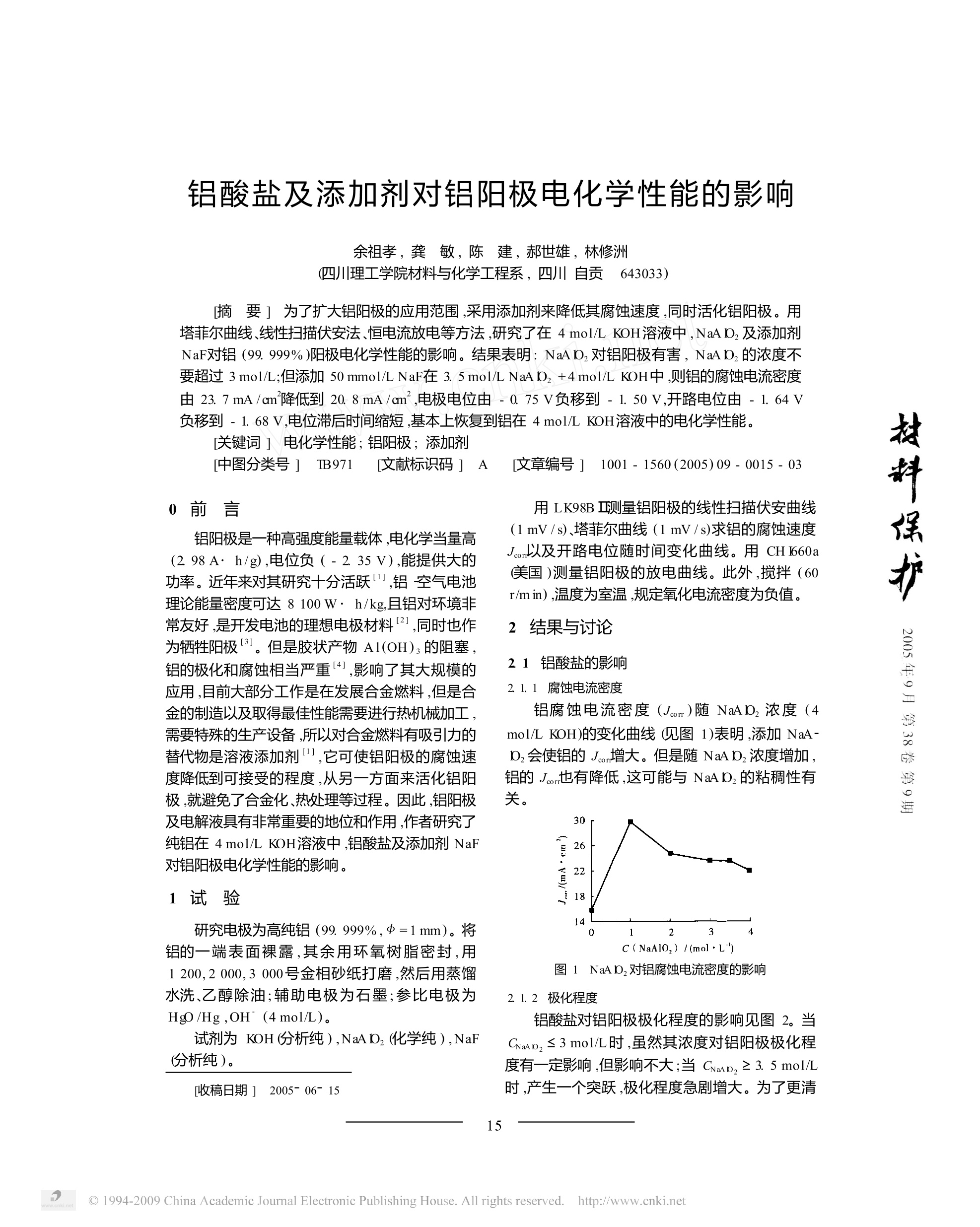
-
2/5

还剩3页未读,是否继续阅读?
继续免费阅读全文产品配置单
天津市兰力科化学电子高技术有限公司为您提供《铝阳极中电化学性能检测方案(电化学工作站)》,该方案主要用于其他中电化学性能检测,参考标准《暂无》,《铝阳极中电化学性能检测方案(电化学工作站)》用到的仪器有天津兰力科电化学工作站LK98BII。
我要纠错
推荐专场
相关方案
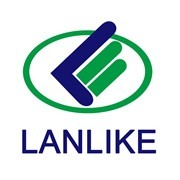

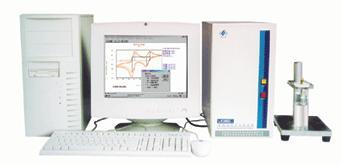
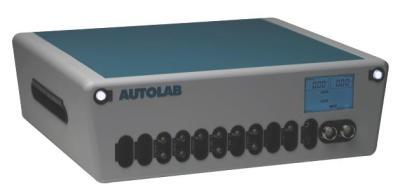
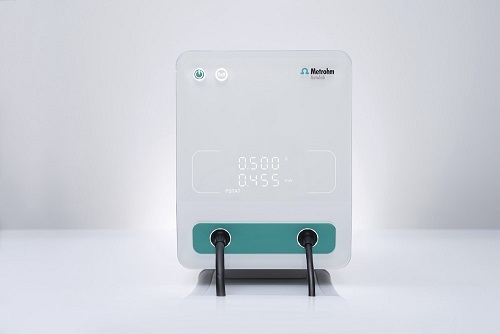

 咨询
咨询